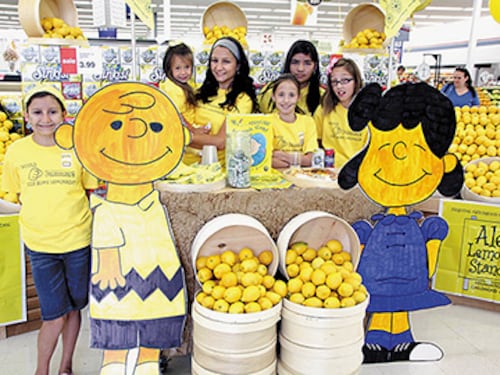Using Social Media For Social Good
Four ways in which you can utilise the power of social web to make a strong impact on the world


With so many large-scale problems in the world, we’re accustomed to think that ‘experts’ are the best people to solve them. But if recent events tell us anything, it’s that the internet and social web tools are powerful means to connect people with one another in order to ignite change.
That means we’re all in a position to harness social media thoughtfully in support of our goals as individuals or as organisations. With four simple steps, each one of us can leverage our networks, share a story, amplify our message, and provide tools so that others can take action.
In some cases, you may be surprised to find that the quality of your own life will likely improve. Recent research shows that having a meaningful impact on the world around you is actually a better predictor of happiness than many other things you think will make you happy.
Narrow Your Focus
This is the first component in launching any effective social media effort. Normally, we’re told to ‘think big’. But if we ‘think small’ instead, and adopt a single, focussed approach, we can actually have greater impact on the world around us. The idea is to go deep, before going broad.
One good example is the story of Stanford graduate Sameer Bhatia, who was diagnosed with leukaemia and needed a bone marrow transplant. The problem was that his chances of finding a match were one in 20,000.
Bhatia’s friends initiated a campaign focussed on one element: Getting 20,000 South Asians registered with the National Bone Marrow Registry. Starting with a single, powerful email message, the team harnessed social media platforms like Facebook and YouTube to orchestrate bone marrow drives all across the country. The result: 24,611 registered donors, including a perfect match for Bhatia, and an even-larger campaign to harness social networks and register 100,000 individuals.
I guarantee you they wouldn’t have achieved the same results if they had asked their friends to help cure cancer.
Tell a Good Story
You may have a brilliant argument about why people should get involved with your cause, but they will not be inspired to act if you don’t engage them emotionally. Telling a good story is a critical skill that separates ideas that take flight from those that stay grounded.
Consider four-year-old Alex Scott, who proved the power of a good story when she decided to do something about childhood cancer. After being diagnosed with leukaemia, she set up the most American of childhood enterprises—a lemonade stand—to raise money for the cause.
Soon lemonade stands began popping up across the country to benefit a new foundation established by Alex’s parents. These were complemented by other efforts such as the Lemon Ball, Lemon Marathon, and even a children’s book called Alex and the Amazing Lemonade Stand.
Alex’s story also demonstrates what research suggests: When people give their time (not just their money) and work on the ground (not just online), they often become more engaged with an idea. And with engagement, Alex has raised more than $50 million to fight childhood cancer.
Be Unexpected
Not every social media campaign grabs attention through life-or-death stories. Most need to impress through originality. Consider Coke: In 2009, Coca-Cola was looking for a new way to connect teens to its flagship brand Coke. Instead of predictable spending on Super Bowl ads, it delivered The Happiness Machine campaign.
Coke installed a vending machine at St. John’s University in Queens, New York, just before the final term. Instead of dispensing normal sodas, the machine dispensed unexpected surprises. When a student paid for one Coke, she got many of them, while other students got treats such as flowers, pizzas, balloon animals, and even 10-foot-long sandwiches.
Coke shared The Happiness Machine video on YouTube with an organic single tweet. Within two weeks, the video had been watched two million times. Coke spent less than $50,000 on the video and proved the power of surprise as a tool to grab attention and establish an emotional connection with its brand.
Enable and Empower Others to Act
Once you’ve engaged your audience, the question is: How do you make it easy for people to act? Crowdsourcing has emerged as one of the most powerful means to engage a global community in problem solving.
Nathan Waterhouse, a designer from IDEO [a design and innovation consulting firm], can attest to that—he helped establish an online platform called OpenIDEO to harness the collective creativity of people around the world.
Here’s how it works: An organisation posts a design problem, which moves through three phases (Inspiration, Conception, and Evaluation) toward solutions. At the end of a 10-week process, final concepts are chosen by the participants and can be implemented by whoever chooses to do so. Quite often, this is not just the sponsoring organisation, but the community itself.
Among other accomplishments, the OpenIDEO community has contributed to a fully operational, low-cost sanitation business in Ghana—created by Unilever—to serve 1,000 people in a part of the world where 80 percent of the population has no access to clean toilets.
Another example of empowering others to take action is Help Remedies First-Aid Kit (Help I’ve Cut Myself campaign), which contains the usual adhesive bandages along with a blood swab/bone marrow registry kit and postage-paid envelope that makes it easy for people to register as bone marrow donors.
The beneficiaries of all these efforts, whether residents of Ghana or recipients of bone marrow transplants, point towards a key truth in today’s global, networked community— the opportunity for us to make a difference has simply never existed before like it does at this moment.
Jennifer Aaker is the General Atlantic Professor of Marketing at Stanford University’s Graduate School of Business
First Published: Mar 07, 2013, 06:35
Subscribe Now